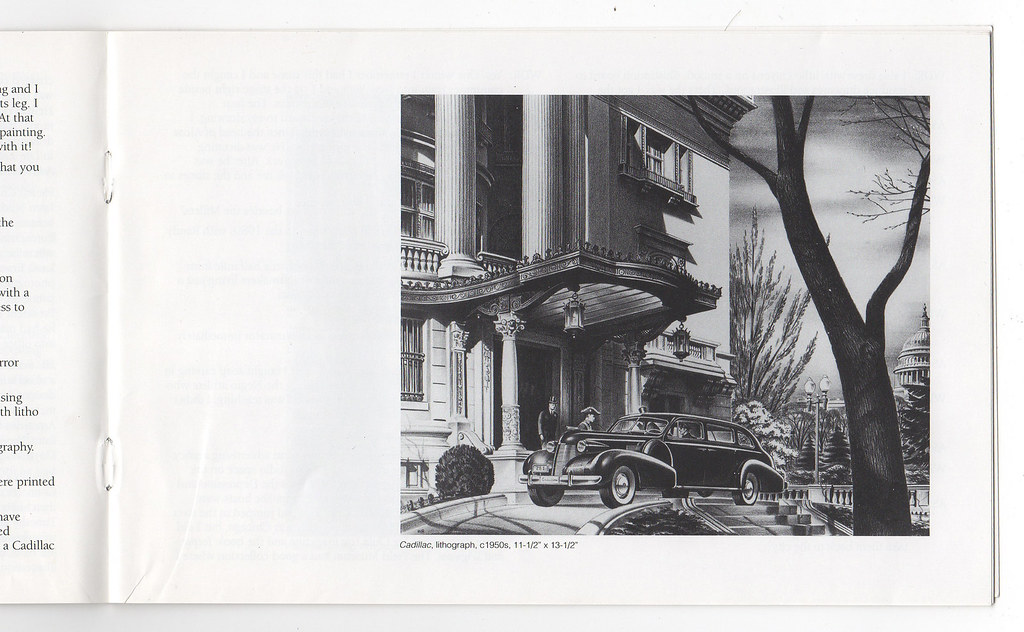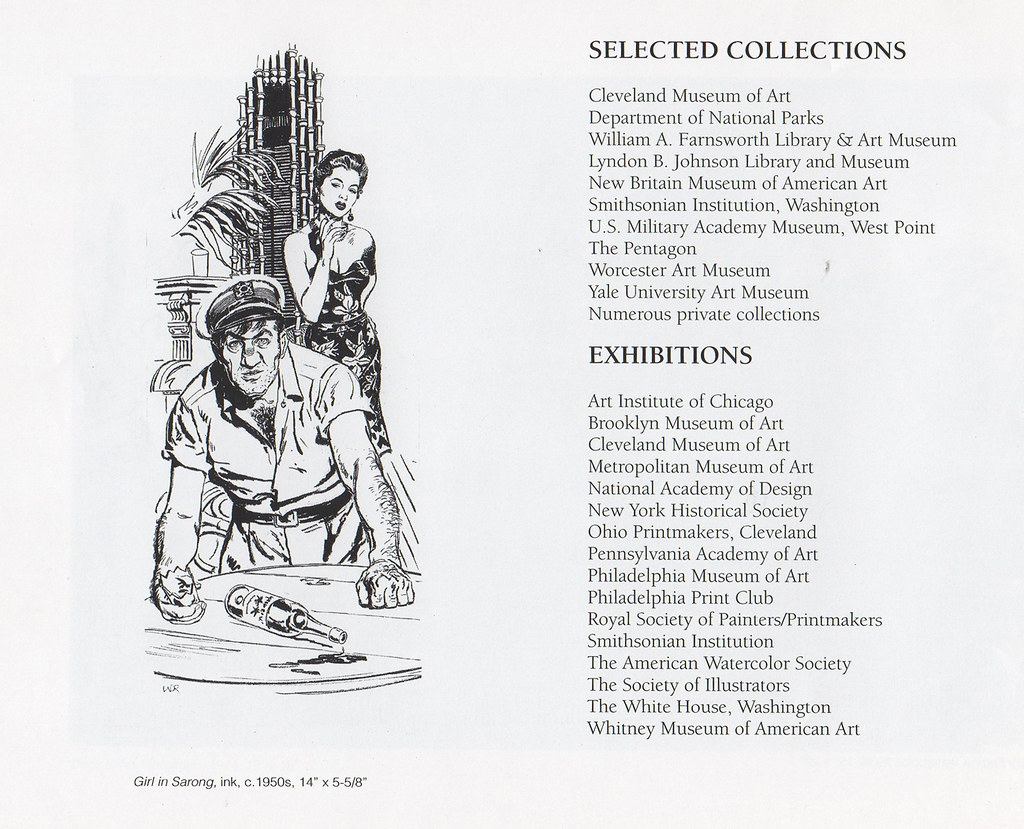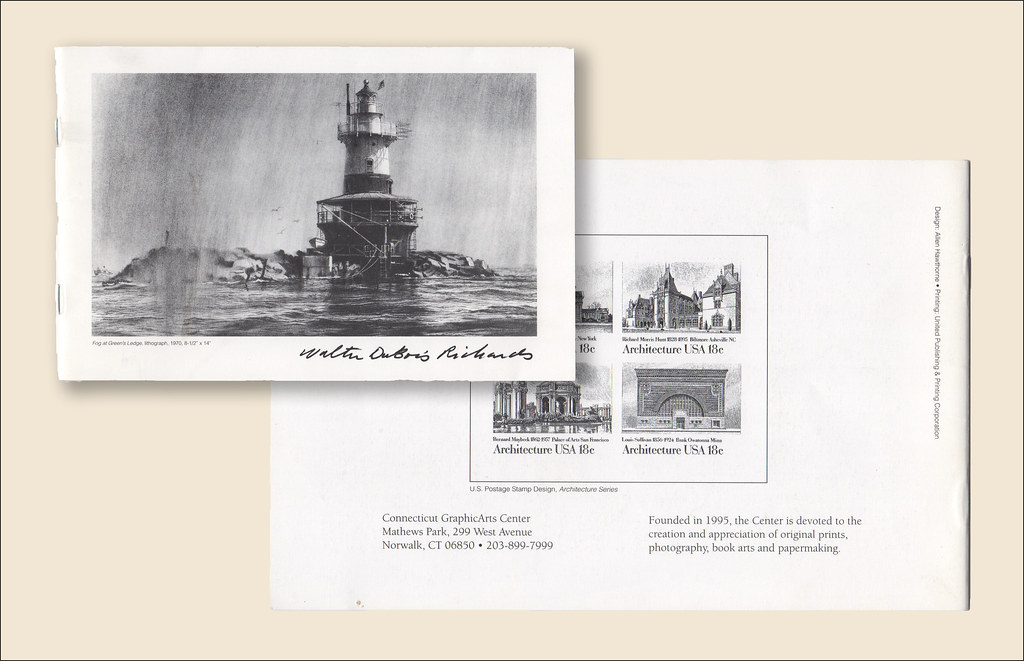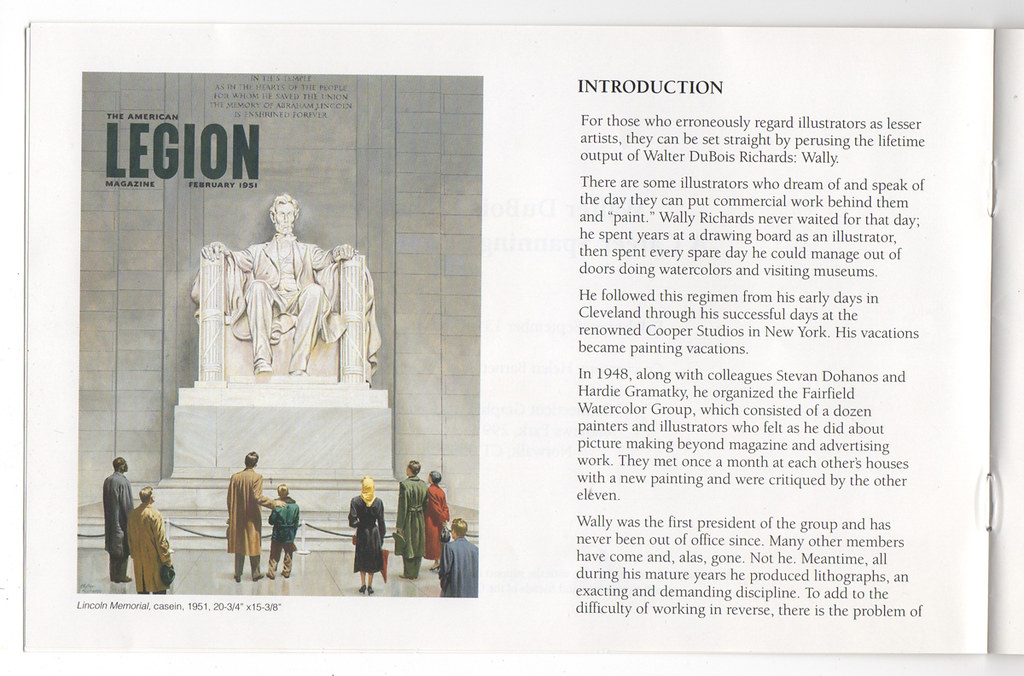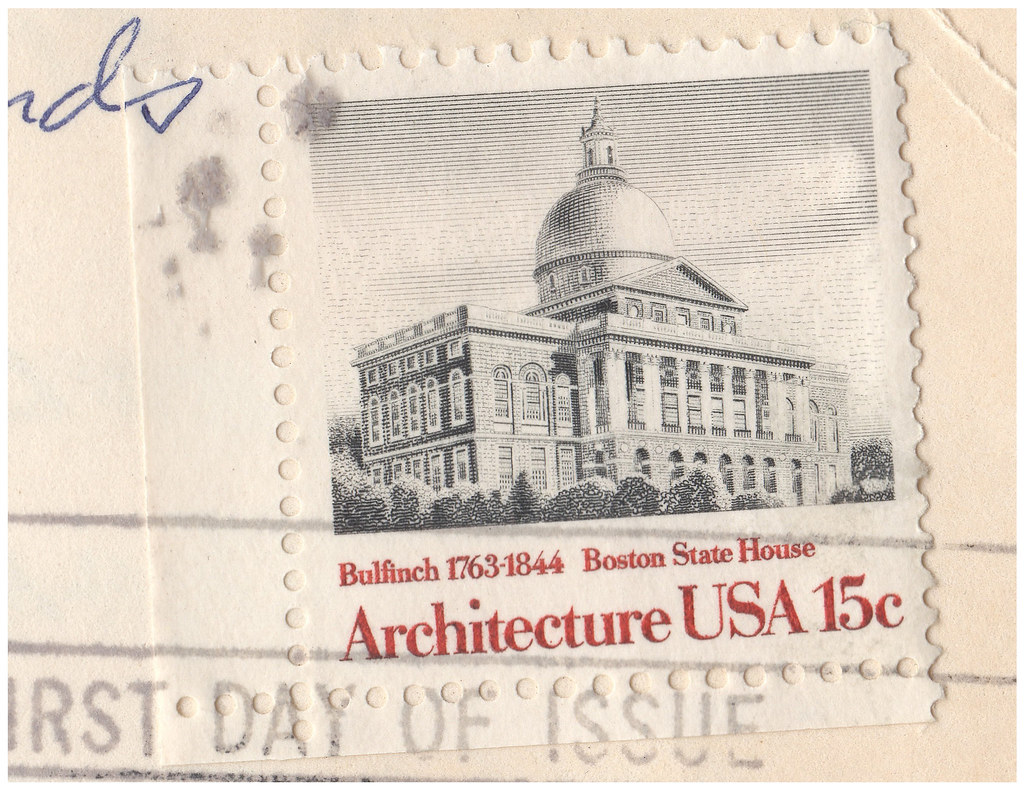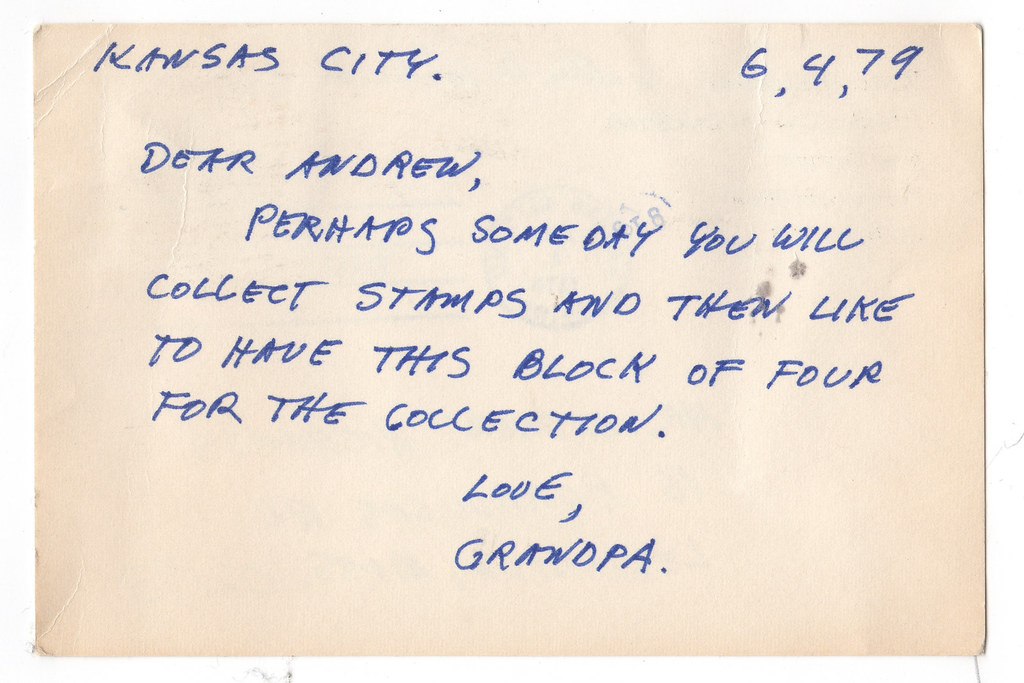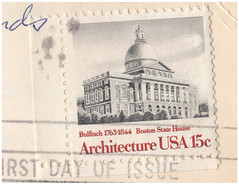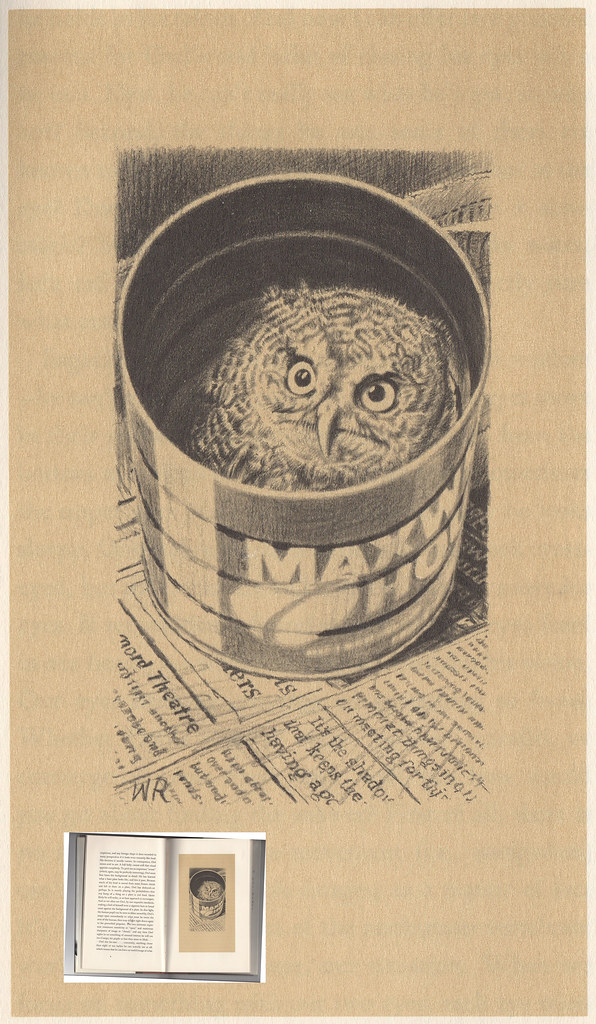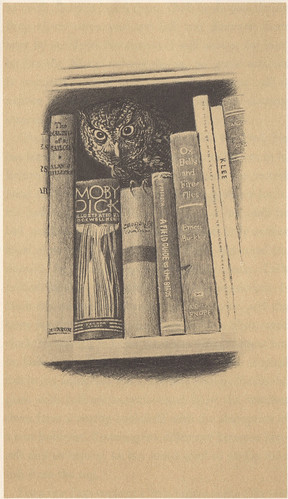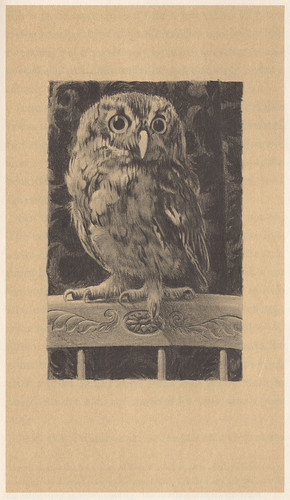-- Please note: These are the remaining pictures found in the exhibition booklet, and for this particular post, are not always meant to correspond directly with the text immediately surrounding them. --
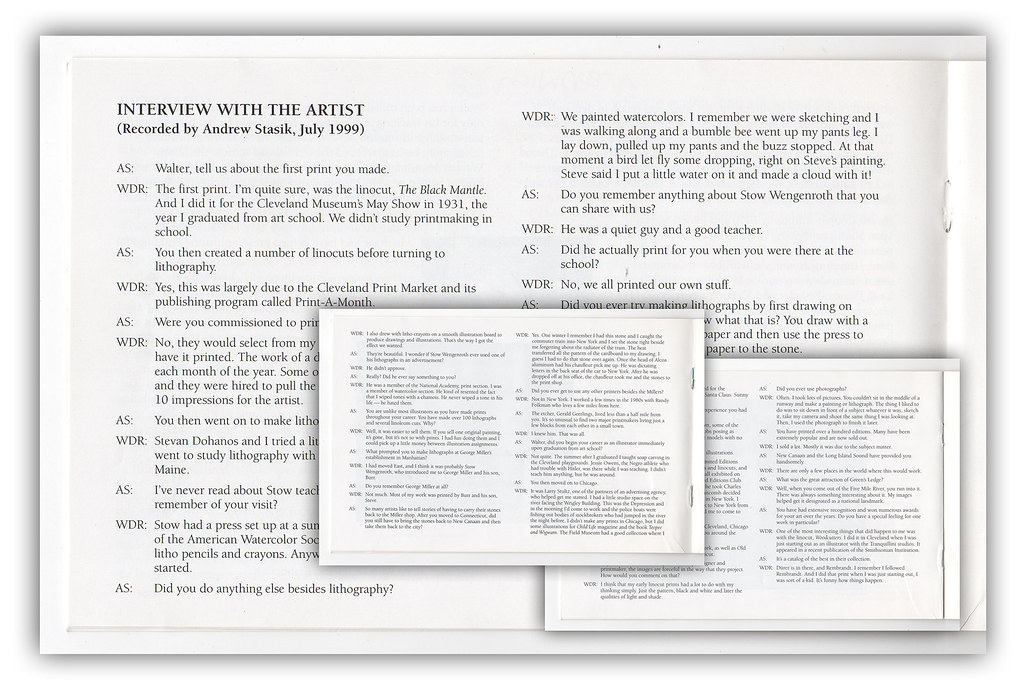
AS: Walter, tell us about the first print you made.
WDR: The first print, I'm quite sure, was the linocut, The Black Mantle. And I did it for the Cleveland Museum's May Show in 1931, the year I graduated from art school. We didn't study printmaking in school.
AS: You then created a number of linocuts before turning to lithography.
WDR: Yes, this was largely due to the Cleveland Print Market and it's publishing program called Print-A-Month.
AS: Were you commissioned to print an edition for distribution?
WDR: No, they would select from my proofs, purchase the block and have it printed. The work of a different artist was selected for each month of the year. Some of the artists were good printers and they were hired to pull the editions which were 250, plus 10 impressions for the artist.
AS: You then went on to make lithographs. Was that in Cleveland?
WDR: Stevan Dohanos and I tried a little in Cleveland. But later we went to study lithography with Stow Wengenroth in Eastport, Maine.
AS: I've never read about Stow teaching. What else do you remember of your visit?
WDR: Stow had a press set up at a summer school run by the president of the American Watercolor Society. He taught us how to use litho pencils and crayons. Anyway, that's where we really got started.
AS: Did you do anything else besides lithography?
WDR: We painted watercolors. I remember we were sketching and I was walking along and a bumble bee went up my pants leg, I lay down, pulled up my pants and the buzz stopped. At that moment a bird let fly some dropping, right on Steve's painting. Steve said I put a little water on it and made a cloud with it!
AS: Do you remember anything about Stow Wengenroth that you can share with us?
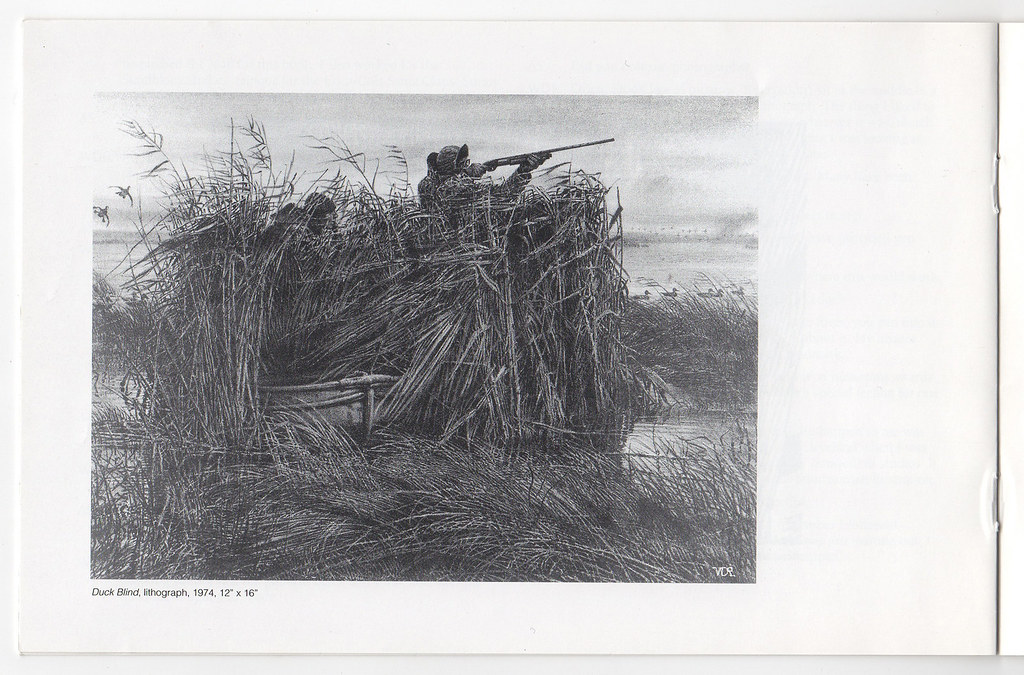
WDR: He was a quiet guy and a good teacher.
AS: Did he actually print for you when you were there at the school?
WDR: No, we all printed our own stuff.
AS: Did you ever try making lithographs by first drawing on transfer paper? Do you know what that is? You draw with a greasy crayon or pencil on paper and then use the press to transfer the grease from the paper to the stone.
WDR: No. I always drew directly on the stone.
AS: You weren't bothered by the fact that the print is a mirror image?
WDR: No. I first traced my outline drawing onto the stone using dragon's blood powder. Then I rendered the image with litho crayons and pencils.
AS: Some of your prints have been printed by offset lithography. Did you want to make cheaper reproductions?
WDR: They are mostly used as my Christmas cards. They were printed by local commercial printshops.
AS: I think one of the unique things you have done is to have created illustrations for ads using lithography. You used lithography to create what then became the image for a Cadillac advertisement.
WDR: I also drew with litho crayons on a smooth illustration board to produce drawings and illustrations. That's the way I got the effect we wanted.
AS: They're beautiful. I wonder if Stow Wengenroth ever used one of his lithographs in an advertisement?
WDR: He didn't approve.
AS: Really? Did he ever say something to you?
WDR: He was a member of the National Academy, print section. I was a member of (the) watercolor section. He kind of resented the fact that I wiped tones with a chamois. He never wiped a tone in his life - he hated them.
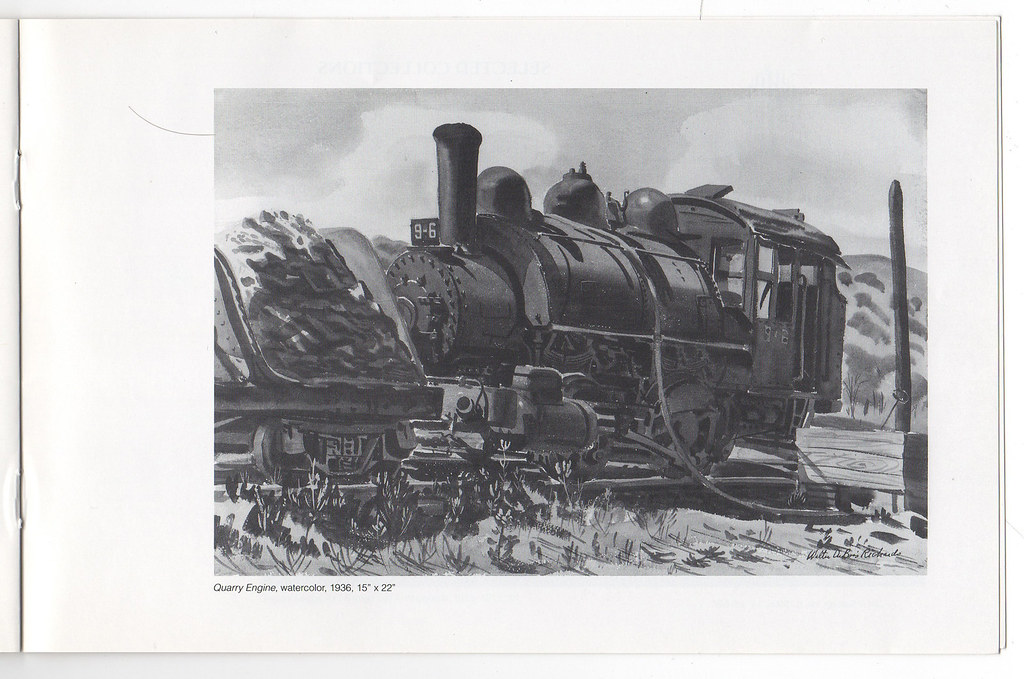
AS: You are unlike most illustrators as you have made prints throughout your career. You have made over 100 lithographs and several linoleum cuts. Why?
WDR: Well, it was easier to sell them. If you sell one original painting, it's gone, but it's not so with prints. I had fun doing them and I could pick up a little money between illustration assignments.
AS: What prompted you to make lithographs at George Miller's establishment in Manhattan?
WDR: I had moved East, and I think it was probably Stow Wengenroth, who introduced me to George Miller and his son, Burr.
AS: Do you remember George Miller at all?
WDR: Not much. Most of my work was printed by Burr and his son, Steve.
AS: So many artists like to tell stories of having to carry their stones back to the Miller shop. After you moved to Connecticut, did you still have to bring the stones back to New Canaan and then take them back to the city?
WDR: Yes. One winter I remember I had this stone and I caught the commuter train into New York and I set the stone right beside me forgetting about the radiator of the train. The heat transferred all the pattern of the cardboard to my drawing. I guess I had to do that stone over again. Once the head of Alcoa aluminum had his chauffeur pick me up. He was dictating letters in the back seat of the car to New York. After he was dropped off at his office, the chauffeur took me and the stones to the print shop.
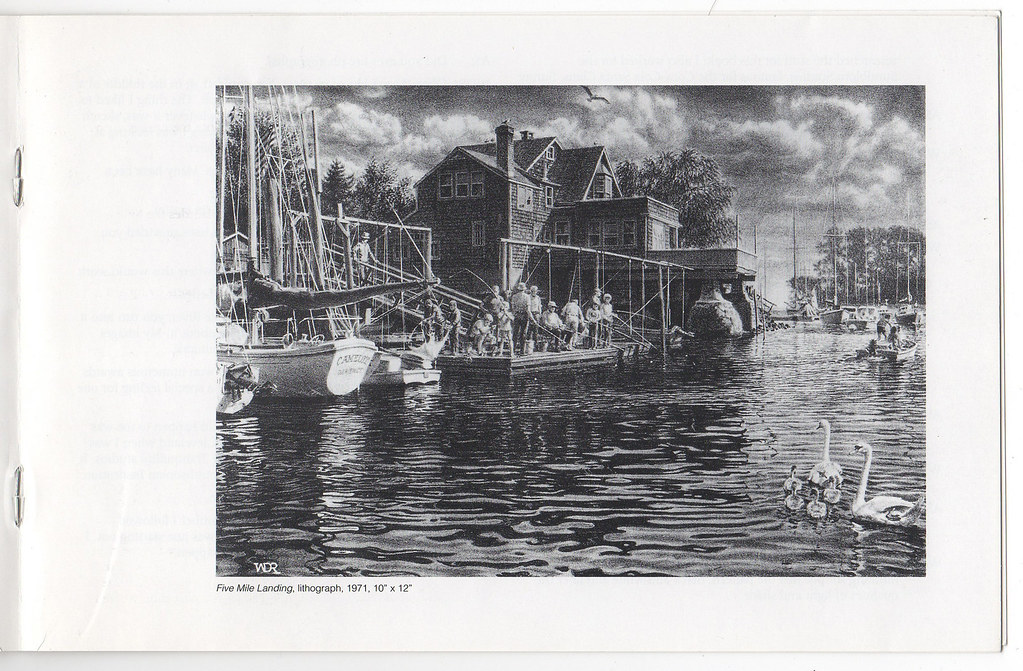
AS: Did you ever get to use any other printers besides the Millers?
WDR: Not in New York. I worked a few times in the 1980s with Randy Folkman who lives a few miles from here.
AS: The etcher, Gerald Geerlings, lived less than a half mile from you. It's so unusual to find two major printmakers living just a few blocks from each other in a small town.
WDR: I knew him. That was all.
AS: Walter, did you begin your career as an illustrator immediately upon graduation from art school?
WDR: Not quite. The summer after I graduated I taught soap carving in the Cleveland playgrounds. Jessie Owens, the Negro athlete who had trouble with Hitler, was there while I was teaching. I didn't teach him anything, but he was around.
AS: You then moved on to Chicago.
WDR: It was Larry Stultz, one of the partners of an advertising agency, who helped get me started. I had a little studio space on the river facing the Wrigley Building. This was the Depression and in the morning I'd come to work and the police boats were fishing out bodies of stockbrokers who had jumped in the river the night before. I didn't make any prints in Chicago, but I did some illustrations for Child Life Magazine and the book Teepee and Wigwam. The Field Museum had a good collection where I researched the stuff for this book. I also worked for the Sundblom Studios, famous for the Coca-Cola Santa Claus. Sunny Sundblom could paint with either hand.
AS: Can you think of any particularly interesting experience you had in Chicago?
WDR: In those days when a new show came into town, some of the chorus girls would come up and want to get jobs posing as models. We used to shoot a lot of film of these models with no film in the camera.
AS: You also used lithography to create your book illustrations.
WDR: While I was still in Cleveland, I entered the Limited Editions book competition, which included lithographs and linocuts, and I came in sixth in the nation. The books were all exhibited on Fifth Avenue in the headquarters of the Limited Editions Club. When Steve Dohanos learned about the show he took Charles Cooper up to see it. Chuck, Steve and Jon Whitcomb decided that they would invite me to join their agency in New York. I remember Jon Whitcomb was on his way back to New York from visiting his family in Columbus when he asked me to come to New York.
AS: You have had a long and productive career in Cleveland, Chicago and New York City with assignments taking you around the world.
WDR: I also lived and worked in Woodstock, New York, as well as Old Greenwich and here in New Canaan, Connecticut.
AS: In your work as illustrator, painter, stamp designer and printmaker, the images are forceful in the way that they project. How would you comment on that?
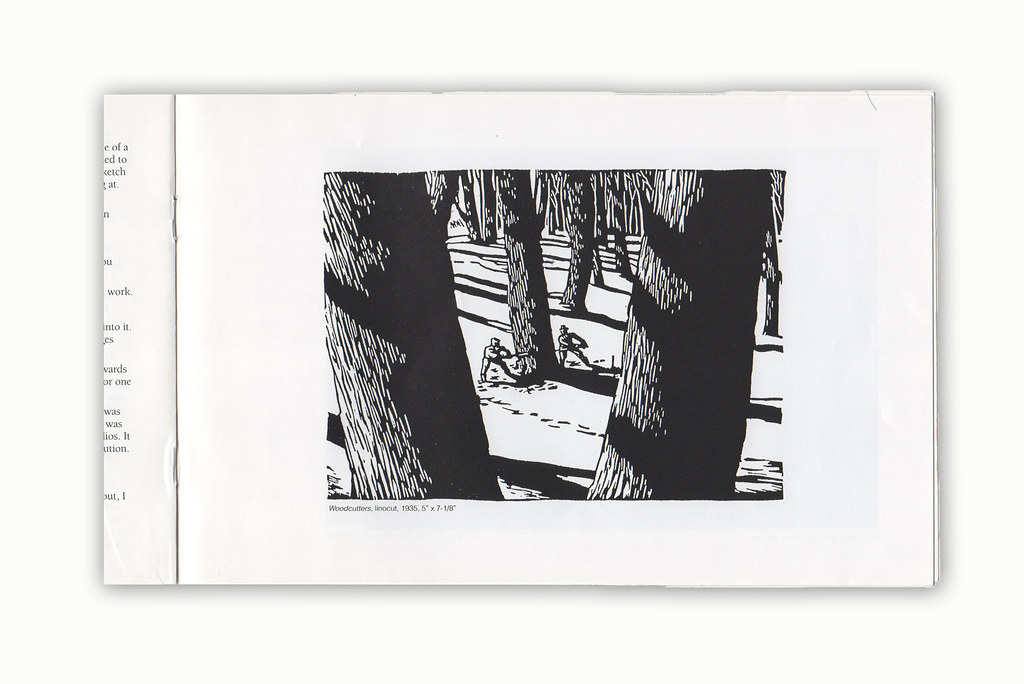
WDR: I think that my early linocut prints had a lot to do with my thinking simply. Just the pattern, black and white and later the qualities of light and shade.
AS: Did you ever use photographs?
WDR: Often. I took lots of pictures. You couldn't sit in the middle of a runway and make a painting or lithograph. The thing I liked to do was to sit down in front of a subject whatever it was, sketch it, take my camera and shoot the same thing I was looking at. Then, I used the photograph to finish it later.
AS: You have printed over a hundred editions. Many have been extremely popular and are now sold out.
WDR: I sold a lot. Mostly it was due to the subject matter.
AS: New Canaan and the Long Island Sound have provided you handsomely.
WDR: There are only a few places in the world where this would work.
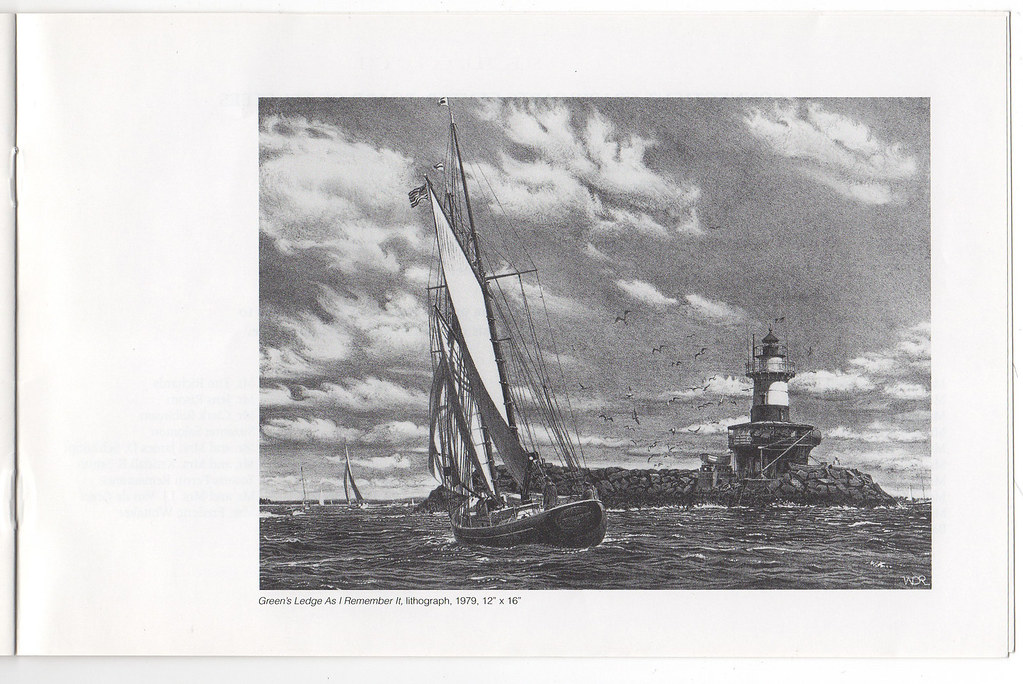 AS: What was the great attraction of Green's Ledge?
AS: What was the great attraction of Green's Ledge?WDR: Well, when you come out of the Five Mile River, you run into it. There was always something interesting about it. My images helped get it designated as a national landmark.
AS: You have had extensive recognition and won numerous awards for your art over the years. Do you have a special feeling for one work in particular?
WDR: One of the most interesting things that did happen to me was with the linocut, Woodcutters. I did it in Cleveland when I was just starting out as an illustrator with the Tranquillini studios. It appeared in a recent publication of the Smithsonian Institution.
AS: It's a catalog of the best in their collection.
WDR: Durer is in there, and Rembrandt. I remember I followed Rembrandt. And I did that print when I was just starting out, I was sort of a kid. It's funny how things happen.
*To give credit where credit is due, I've included Andrew Stasik's name and the non-profit organization he worked for (and might still). It is hard for me to express the gratitude I feel toward Mr. Stasik for taking the time to conduct this interview. I looked and did not find a website for the Graphic Arts Center. I did find the following description on an unrelated website: "The Connecticut Graphics Arts Center was founded in 1995 as a non-profit, multi-media studio workshop and gallery devoted to the creation of original prints, photographs, artists' books and related disciplines through its year-round workshops conducted by nationally recognized master printers. Visitors may see changing exhibitions, and view artists making prints. Free." The Connecticut Graphic Arts Center is located in Mathews Park, 299 West Avenue, Norwalk, CT.

